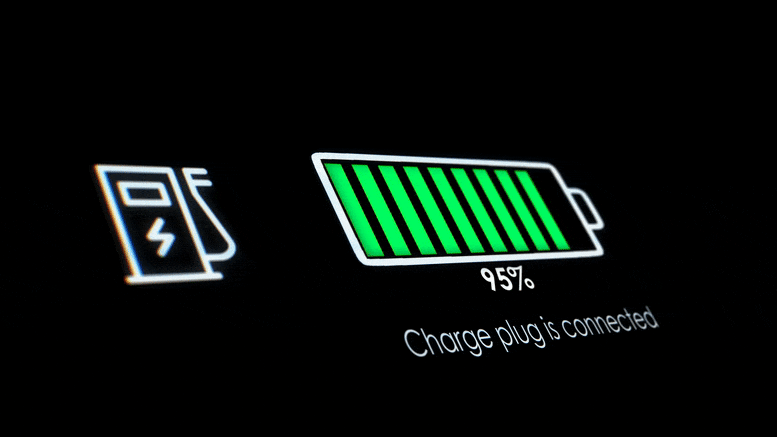Faster Charging Electric Vehicles by Suppressing Lithium Plating in Automotive Batteries
Faster Charging Electric Vehicles by Suppressing Lithium Plating in ... SciTechDaily


Achieving Sustainable Development Goals through Breakthrough in Electric Vehicle Battery Technology

A research team has identified a technique to prevent lithium plating in electric vehicle batteries, potentially resulting in quicker charging times. By optimizing the microstructure of the graphite negative electrode, the propensity for lithium plating can be significantly reduced. This discovery can revolutionize the efficiency, safety, and longevity of electric car batteries, making them an increasingly desirable choice for consumers.
Introduction
Researchers have made a significant breakthrough in electric vehicle (EV) battery technology by finding a way to prevent lithium plating. This advancement promises faster charging times and longer battery life, contributing to the achievement of the Sustainable Development Goals (SDGs).
A new study led by Dr. Xuekun Lu from Queen Mary University of London, in collaboration with an international team of researchers from the UK and USA, has discovered a method to mitigate lithium plating in EV batteries. The findings of this study will be published in the journal Nature Communications.
Understanding Lithium Plating
Lithium plating is a phenomenon that occurs during fast charging of lithium-ion batteries. It involves the accumulation of lithium ions on the battery’s negative electrode surface, forming a layer of metallic lithium instead of intercalating into the electrode. This process can damage the battery, shorten its lifespan, and even lead to fire and explosion.
The Solution: Optimizing the Microstructure
Dr. Xuekun Lu explains that lithium plating can be significantly reduced by optimizing the microstructure of the graphite negative electrode. By fine-tuning the particle and electrode morphology, a homogeneous reaction activity and reduced local lithium saturation can be achieved. This breakthrough discovery improves the performance of EV batteries and enhances their efficiency, safety, and longevity.

The distribution of lithium concentration is indicated by colors during the charging process of a graphite negative electrode. Credit: Xuekun Lu et al/Nature Communications
Implications of the Study
This research provides valuable insights into the development of advanced fast-charging protocols by improving the understanding of lithium redistribution within graphite particles during fast charging. This knowledge can lead to an efficient charging process while minimizing the risk of lithium plating.
In addition to faster charging times, the study also found that refining the microstructure of the graphite electrode can improve the battery’s energy density. This means that electric cars can travel further on a single charge, contributing to the SDG of sustainable transportation.
These groundbreaking findings have the potential to revolutionize EV battery technology, resulting in faster-charging, longer-lasting, and safer electric cars. This advancement aligns with SDG 7 (Affordable and Clean Energy) and SDG 9 (Industry, Innovation, and Infrastructure), making electric vehicles a more attractive option for consumers.
Reference: “Multiscale Dynamics of Charging and Plating in Graphite Electrodes Coupling Operando Microscopy and Phase-field Modelling” 24 August 2023, Nature Communications. DOI: 10.1038/s41467-023-40574-6
SDGs, Targets, and Indicators
1. Which SDGs are addressed or connected to the issues highlighted in the article?
- SDG 7: Affordable and Clean Energy
- SDG 9: Industry, Innovation, and Infrastructure
- SDG 11: Sustainable Cities and Communities
- SDG 12: Responsible Consumption and Production
The article discusses advancements in electric vehicle (EV) batteries, specifically focusing on preventing lithium plating to enable faster charging times and longer battery life. These advancements contribute to the goals of affordable and clean energy (SDG 7), promoting innovation and infrastructure development (SDG 9), creating sustainable cities and communities (SDG 11), and encouraging responsible consumption and production (SDG 12).
2. What specific targets under those SDGs can be identified based on the article’s content?
- Target 7.2: Increase the share of renewable energy in the global energy mix
- Target 9.4: Upgrade infrastructure and retrofit industries to make them sustainable
- Target 11.2: Provide access to safe, affordable, accessible, and sustainable transport systems for all
- Target 12.2: Achieve sustainable management and efficient use of natural resources
The article’s content aligns with these targets as it discusses advancements in EV batteries that contribute to increasing the share of renewable energy, upgrading infrastructure for sustainability, providing sustainable transport options, and achieving efficient use of natural resources.
3. Are there any indicators mentioned or implied in the article that can be used to measure progress towards the identified targets?
Yes, the article mentions indicators that can be used to measure progress towards the identified targets:
- Increased share of renewable energy: The advancements in EV batteries mentioned in the article contribute to the increased adoption of electric vehicles, which rely on renewable energy sources for charging.
- Sustainable infrastructure and industries: The optimization of the microstructure of graphite negative electrodes in EV batteries contributes to the sustainability and efficiency of the infrastructure supporting electric vehicles.
- Access to sustainable transport systems: The advancements in EV batteries enable faster charging times and longer battery life, making electric vehicles a more viable and sustainable mode of transportation.
- Sustainable management and efficient use of natural resources: By preventing lithium plating and improving battery performance, the research contributes to the efficient use of lithium resources in EV batteries.
These indicators demonstrate progress towards the identified targets by showcasing the positive impact of the advancements in EV batteries on renewable energy adoption, sustainable infrastructure, sustainable transport systems, and efficient resource management.
SDGs, Targets, and Indicators Table
| SDGs | Targets | Indicators |
|---|---|---|
| SDG 7: Affordable and Clean Energy | Target 7.2: Increase the share of renewable energy in the global energy mix | – Increased adoption of electric vehicles relying on renewable energy sources for charging |
| SDG 9: Industry, Innovation, and Infrastructure | Target 9.4: Upgrade infrastructure and retrofit industries to make them sustainable | – Optimization of microstructure in EV batteries contributes to sustainable and efficient infrastructure supporting electric vehicles |
| SDG 11: Sustainable Cities and Communities | Target 11.2: Provide access to safe, affordable, accessible, and sustainable transport systems for all | – Advancements in EV batteries enable faster charging times and longer battery life, making electric vehicles a more viable and sustainable mode of transportation |
| SDG 12: Responsible Consumption and Production | Target 12.2: Achieve sustainable management and efficient use of natural resources | – Prevention of lithium plating and improved battery performance contribute to the efficient use of lithium resources in EV batteries |
Behold! This splendid article springs forth from the wellspring of knowledge, shaped by a wondrous proprietary AI technology that delved into a vast ocean of data, illuminating the path towards the Sustainable Development Goals. Remember that all rights are reserved by SDG Investors LLC, empowering us to champion progress together.
Source: scitechdaily.com

Join us, as fellow seekers of change, on a transformative journey at https://sdgtalks.ai/welcome, where you can become a member and actively contribute to shaping a brighter future.







